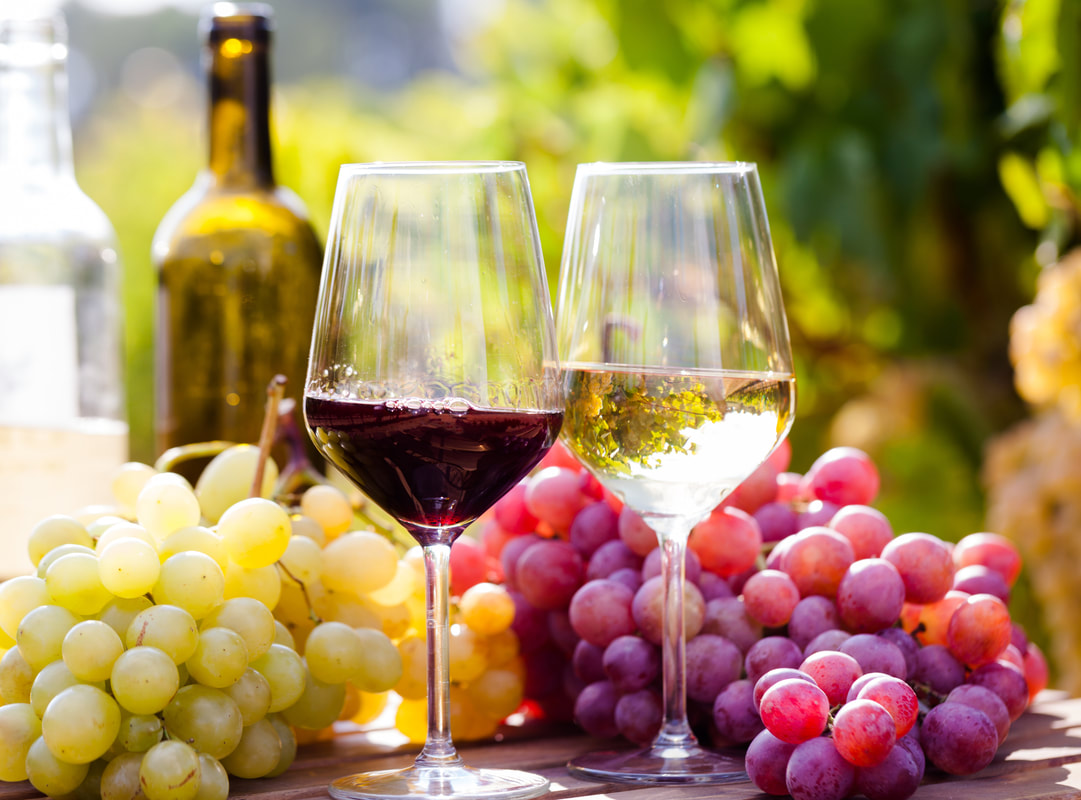- Subscribe
- Digital Edition
-
Beverage Guide
- Flavor and Cocktail Construction >
- Production Fundamentals >
- Non-Alcoholic Beverages >
-
Beer
>
- Cider >
- Sake
-
Spirits
>
-
Wine
>
- Kamaʻāina Wine Makers >
-
Winemaking
>
- A Guide to: High Sugar Residual Wines
- A Guide to: Post Fermentation Flavor Adjustments
- A Guide to: Post Fermentation Process: Stabilization
- A Guide to: Wine Prefermentation Practices
- A Guide to: Wine Microbes
- A Guide to: Wine Alcoholic Fermentation Physical Environment
- A Guide to: Wine Fermentation Chemical Environment
- A Guide to: Wine Bottling
- A Guide to: Wine Faults
- A Guide to: Wine Polyphenols
- A Guide to: Wine Aroma Compounds: Pt 1
- A Guide to: Wine Aroma Compounds: Pt 2
- A Guide to Viticulture
- Red and White Grape Aroma Compounds
- Wine Styles >
- Business Strategy
- News and Events
- About
- Production Fundamentals
- Flower Aroma Compounds
- Flavor Pairing and Recipe Development
Red Wine
|
Two studies that examined the differences between mono-varietal red wines where Ferreira et al 2000 studied: Grenache, Tempranillo, Cabernet Sauvignon, and Merlot
Louw et al. 2010 studied: Merlot, Cabernet Sauvignon, Pinotage, and Shiraz Louw et al. (2010) noted that the aroma compounds are consistently found in red wine and always present at concentrations higher than their odor thresholds were by-products of yeast or bacteria metabolism with the exception of b-damascenone: Most powerful aroma compounds found above odor thresholds (Ferreira et al 2000) and (Louw et al. 2010):
Slightly less important aroma compounds
|
Compounds at or only slightly above perception thresholds from Ferreira et al (2000):
Occasional odorants
In some but not all Cabernet Sauvignon wine
Compounds with concentrations not found above, or similar to, their odor thresholds:
|
White Wine
|
White wine aroma is primarily influenced by its esters, however we have yet to find a good summary study that explains the particular aroma compounds in white wine. Swigers et al (2005) does note that Chardonnay and Riesling wines contain similar esters of: Ethyl-2-methylpropanoate, ethyl-2-butanoate, 3-methyl butanoate, ethylhexanoate, ethyl octanoate, ethyl decanoate, and theacetate esters hexyl acetate, 2-methylbutyl acetate and 3-methylbutyl acetate. Louw et al (2010) compared Sauvignon Blanc and Chardonnay and found the major difference were:
For more insight Red Wine Lallemand. Sensory Development Of Hot-Climate Red Varietals During Fermentation Part 2 Rosé Wine Fermentation Management And The Current Market Situation (2011) https://www.lallemandwine.com/wp-content/uploads/2020/02/Cahier-Dubrovnik-2011Complet-spb.pdf |
Ferreira, V., López, R., & Cacho, J. F. (2000). Quantitative determination of the odorants of young red wines from different grape varieties. Journal of the Science of Food and Agriculture, 80(11), 1659-1667. https://www.academia
.edu/8211729/Quantitative_determination_of_the_ odorants_of_young_red_wines_from_different_grape_varieties Louw, L., Tredoux, A. G. J., Van Rensburg, P., Kidd, M., Naes, T., & Nieuwoudt, H. (2010). Fermentation-derived aroma compounds in varietal young wines from South Africa. https://www.journals.ac.za/index.php/sajev/article/download/ 1418/1500 White Wine Lallemand. (2009) Sensory Development Of Cool-Climate Varietals (Chardonnay and Riesling) During Wine Fermentation https://www.lallemandwine.com/wp-content/uploads/2020/02/CahierGeisenheimComplet.pdf Smyth, H., Cozzolino, D., Herderich, M. J., Sefton, M. A., & Francis, I. L. (2005). Relating volatile composition to wine aroma: identification of key aroma compounds in Australian white wines. In Proceedings of the 12th Australian Wine Industry Technical Conference (Blair RJ, Williams PJ & Pretorius IS, eds) (pp. 31-33). https://digital.library.adelaide.edu.au/dspace/bitstream/2440/56274/8/02whole.pdf Cataldo E, Salvi L, Paoli F, Fucile M, Mattii GB. Effect of Agronomic Techniques on Aroma Composition of White Grapevines: A Review. Agronomy. 2021; 11(10):2027. https://doi.org/10.3390/agronomy11102027 |
PUBLISHED: OCTOBER 2022
MENU
|
HOME
|
SUBSCRIBE |
DIGITAL
|
BEVERAGE
|
NEws and
|
ABOUT |
CONTACT |
©2022 Hawaii Beverage Guide
Terms & Conditions
Terms & Conditions
- Subscribe
- Digital Edition
-
Beverage Guide
- Flavor and Cocktail Construction >
- Production Fundamentals >
- Non-Alcoholic Beverages >
-
Beer
>
- Cider >
- Sake
-
Spirits
>
-
Wine
>
- Kamaʻāina Wine Makers >
-
Winemaking
>
- A Guide to: High Sugar Residual Wines
- A Guide to: Post Fermentation Flavor Adjustments
- A Guide to: Post Fermentation Process: Stabilization
- A Guide to: Wine Prefermentation Practices
- A Guide to: Wine Microbes
- A Guide to: Wine Alcoholic Fermentation Physical Environment
- A Guide to: Wine Fermentation Chemical Environment
- A Guide to: Wine Bottling
- A Guide to: Wine Faults
- A Guide to: Wine Polyphenols
- A Guide to: Wine Aroma Compounds: Pt 1
- A Guide to: Wine Aroma Compounds: Pt 2
- A Guide to Viticulture
- Red and White Grape Aroma Compounds
- Wine Styles >
- Business Strategy
- News and Events
- About
- Production Fundamentals
- Flower Aroma Compounds
- Flavor Pairing and Recipe Development

